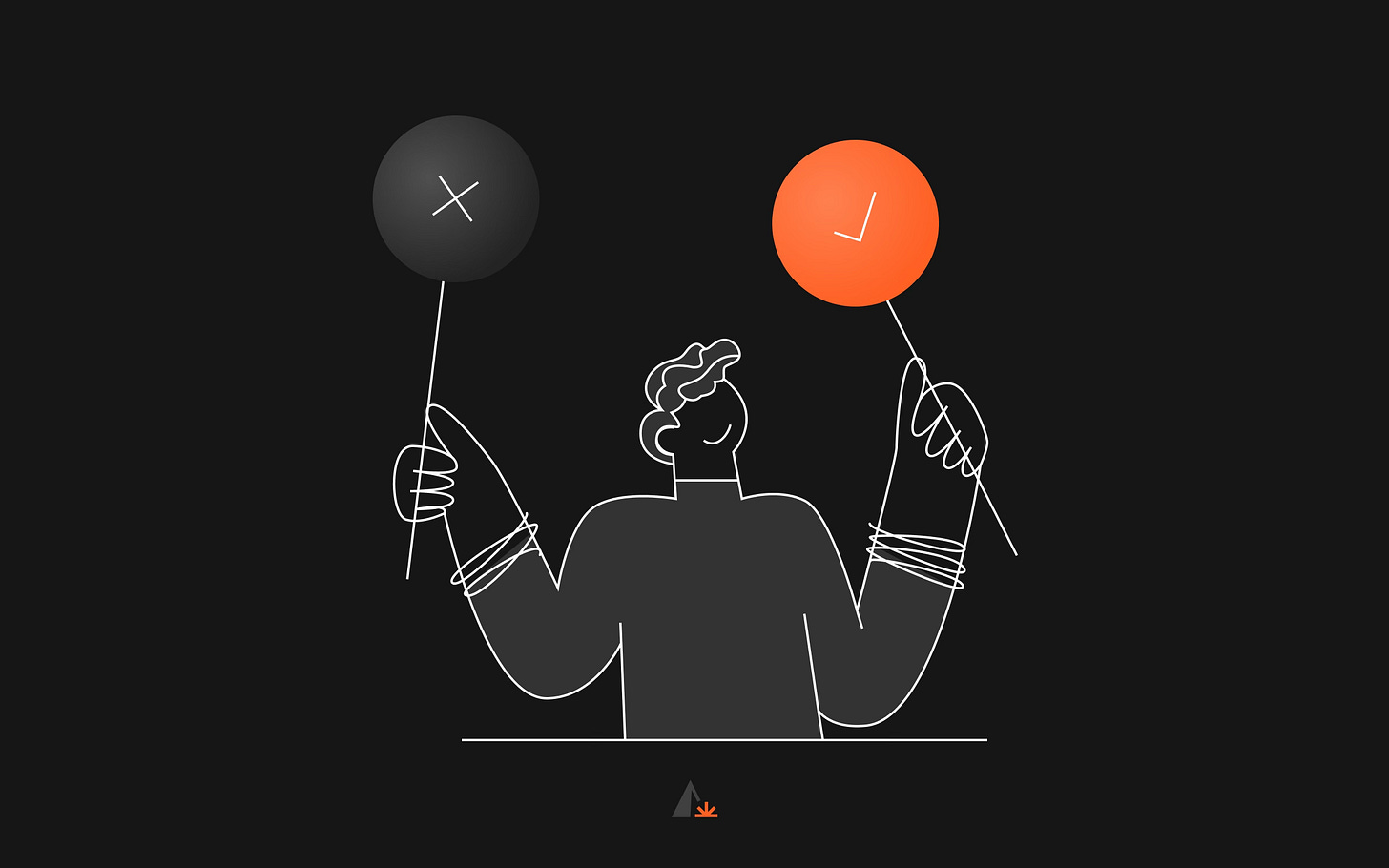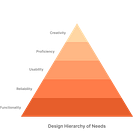Is it worth hiring a product designer in 2024?
Or can your business afford not to hire a product designer?
When it comes to product design, today’s consumers have high expectations. It’s not enough anymore to only have a functional product. Customers want it to be reliable, usable, proficient, and creatively crafted1.
As designers, we love reframing problems and questions. So let’s reframe the question from “Is it worth hiring a product designer in 2024?” to “Can your business afford not to hire a product designer?”.
The role of the product designer
Product designers play a key role in the product development process2. Which means investing in hiring a product designer can lead to business growth and significant cost savings in the long run.
One of the most significant benefits of hiring a product designer is that they can help ensure that the product development process is centered on the needs of the users from the start. At the same time keeping the business needs in mind.
Companies can boost customer satisfaction and reduce revenue loss by focusing on user’s needs and investing in designing products that are intuitive and simple to use. This also impacts customer retention and loyalty, which leads to higher revenue and profitability.
Why hire a product designer
There are numerous benefits to hiring a product designer for your company. No matter which stage of growth you are at, a designer can help you iterate, test, and, eventually, grow faster.
This is what a reliable product designer can bring to the table.
They enhance the user experience of the product
A product designer changes the way a product feels to users. But design work takes up only around 40% of the entire effort, which may surprise you.
What interests product designers is figuring out the overlap between what users want and what business needs are. They study the users by carefully analyzing them and then applying that research to align with business needs and improve the product on each level.
They help reduce development costs
If you’re not aware, detecting and fixing a software problem after a product launch is 100 times more expensive and 30 times slower than finding and fixing it during the design process.
Even minor changes to design, components, or interactions during development might result in significant expenses. This happens because developers must perform extensive coding to accomplish this.
Designers can help reduce these costs by creating realistic prototypes and testing with customers before the product is built.
They streamline workflows and enhance productivity
A product designer often establishes clear goals and expectations when collaborating with other teams.
If your company has product designers, you’ll notice that they will automate tasks that are repeated frequently, making things run more smoothly.
They also will figure out how to save time spent designing by creating design elements that can be reused (UI kits and design systems).
They foster innovation
A good product designer goes beyond traditional problem-solving; they are the catalysts for company-wide innovation.
They bring a unique perspective to the table by smoothly combining aesthetics and functionality. Consider them to be the designers of user-centric experiences, developing solutions that not only meet but surpass expectations.
This approach is not limited to design; it affects the entire team, encouraging a culture of innovation and problem-solving. A product designer, in essence, becomes the driving force behind a company's progress, moving it forward in the ever-changing world of market demands.
How to hire a product designer
Hiring a good product designer is expensive. It will take time, and require team coordination, resources, and costs. You want to make sure that you’re hiring the right person before making the final decision.
Here’s what I would suggest to look at first when hiring a product designer.
Design thinking
Product designers should be familiar with design thinking strategies that emphasize user needs, ideation, and prototyping. They must be able to create and improve user-centered design solutions for complex scenarios.
Technical skills
Product designers should be comfortable with industry-standard design tools such as Figma, Sketch, and Adobe Creative Suite.
It’s a good sign if a product designer is a generalist3:
They have a business background
They know how to code
They have a degree in psychology
They come from product management
Etc.
Collaboration
Product designers will have to collaborate with a wide range of stakeholders, including developers, product, and marketing teams. As a result, good teamwork and communication skills are essential for product growth.
Attention to detail
Product designers must have an eye for detail and be able to see any design defects or address usability concerns early in the design process.
Regardless of the stage of the growth of your company, a product designer can help you iterate, test, grow faster, and save costs in the long run.
Their empathy for user needs and strong business skills will not only improve customer retention and loyalty but also lead to higher revenue and profitability.





